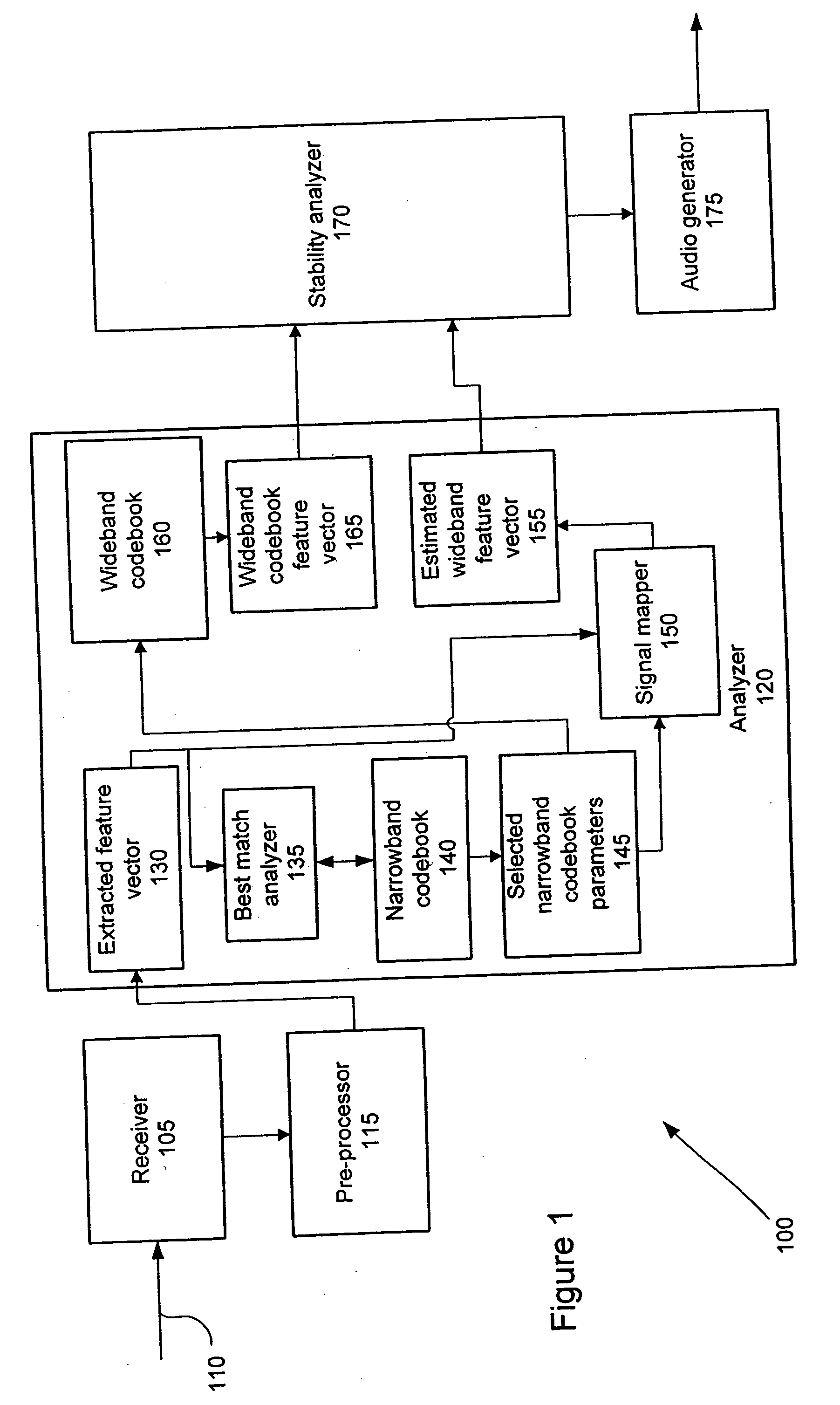System for generating a wideband signal from a received narrowband signal
a narrowband signal and receiver technology, applied in the field of receivers and narrowband signals, can solve the problems of reducing the intelligibility of speech signals, affecting the quality of transmitted audio signals, and affecting the quality of speech communication compared to face-to-face speech communication,
- Summary
- Abstract
- Description
- Claims
- Application Information
AI Technical Summary
Benefits of technology
Problems solved by technology
Method used
Image
Examples
Embodiment Construction
[0018] One example of a system that may be used to generate wideband acoustic signals from received narrowband acoustic signals is shown in FIG. 1. More particularly, the system 100 may be used to generate analog signals that have a larger frequency range than the frequency range of the corresponding received analog signals. As such, whether a signal is a wideband signal or a narrowband signal is dependent on its relation to the other.
[0019] System 100 includes a receiver 105 that is adapted to receive narrowband signals, over a channel 110. Signals received over the voice channel 110 may comprise analog speech signals that have a limited bandwidth, such as those transmitted over a conventional telephone network, a cellular telephone network, a speech headset, or the like. Alternatively, receiver 105 may comprise a digital receiver that is adapted to receive digital signal representations of narrowband audio signals over channel 110. Channel 110 may comprise a wired or wireless med...
PUM
 Login to View More
Login to View More Abstract
Description
Claims
Application Information
 Login to View More
Login to View More - R&D
- Intellectual Property
- Life Sciences
- Materials
- Tech Scout
- Unparalleled Data Quality
- Higher Quality Content
- 60% Fewer Hallucinations
Browse by: Latest US Patents, China's latest patents, Technical Efficacy Thesaurus, Application Domain, Technology Topic, Popular Technical Reports.
© 2025 PatSnap. All rights reserved.Legal|Privacy policy|Modern Slavery Act Transparency Statement|Sitemap|About US| Contact US: help@patsnap.com



